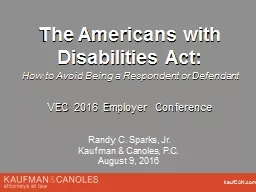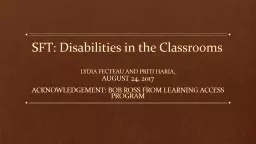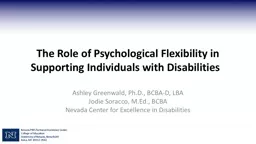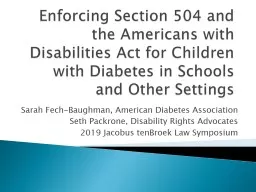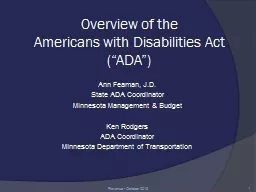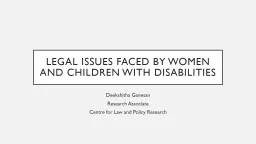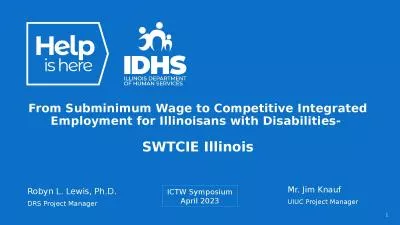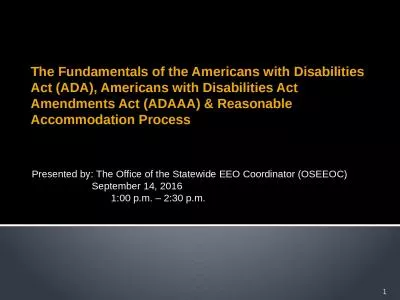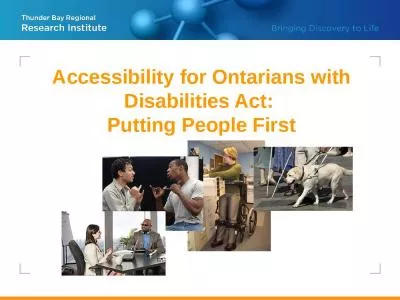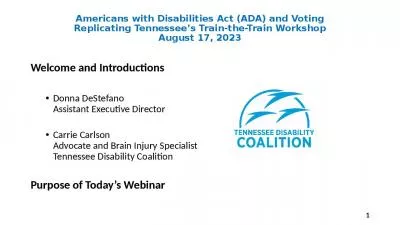PPT-The Americans with Disabilities Act:
Author : debby-jeon | Published Date : 2018-11-09
How to Avoid Being a Respondent or Defendant VEC 2016 Employer Conference Randy C Sparks Jr Kaufman amp Canoles PC August 9 2016 Sobering Statistics ADA 26968 charges
Presentation Embed Code
Download Presentation
Download Presentation The PPT/PDF document "The Americans with Disabilities Act:" is the property of its rightful owner. Permission is granted to download and print the materials on this website for personal, non-commercial use only, and to display it on your personal computer provided you do not modify the materials and that you retain all copyright notices contained in the materials. By downloading content from our website, you accept the terms of this agreement.
The Americans with Disabilities Act:: Transcript
Download Rules Of Document
"The Americans with Disabilities Act:"The content belongs to its owner. You may download and print it for personal use, without modification, and keep all copyright notices. By downloading, you agree to these terms.
Related Documents

